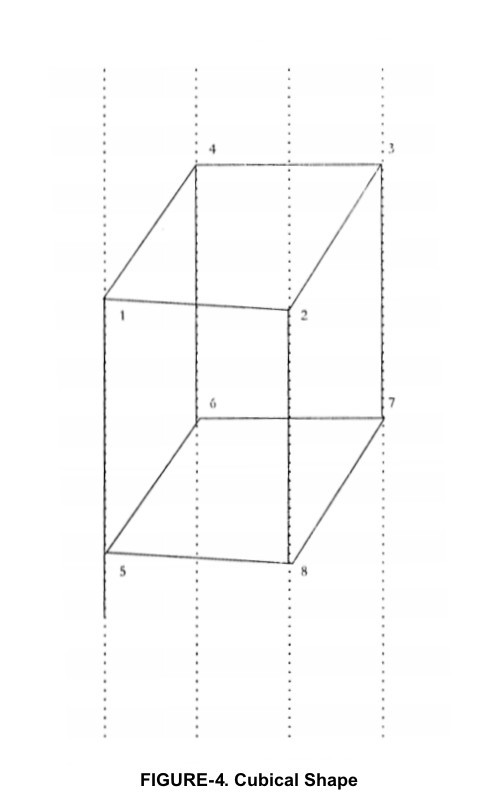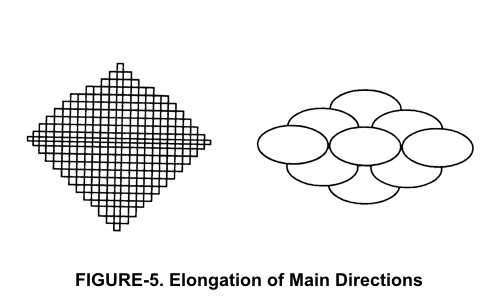Jain philosophers have made an effort to search out the central point of the universe. The Bh.S mentions that after crossing the innumerable part of the first nether land we reach the center of universe.[27] Above and below this point the universe is of the same size i.e. 7 rajju above and 7 rajju below. After having indicated the center of the whole universe the Bh.S indicates the central point of each part of it. Accordingly, the center of the lower section of the world lies in between the fourth and fifth nether lands and, that of the upper section lies in between the third, fourth and fifth heaven. So far as the center of the middle section is concerned, it is situated in the mid part of the mountain Meru. The part is made up of eight points technically known as Rucaka Pradeśa.[28]
In reference to the central point of the universe, the concept of Rucaka Pradeśa is really astonishing and noticeable. Through the concept the Jains have formulated a new paradigm in the field of cosmology. The scientific significance of the paradigm can be supposed from the critical assesment of Prof. Mahavir Raj Gelara, the former V.C. of JVBI. He has not only indicated towards cosmological importance of Rucaka Pradeśa but has tried to sketch out some figures which help us to understand the model of universe in Jain view. Rucaka Pradeśas are named as Eight Point Centre (EPC) by him. His critique goes on as follows:[29]
First, he has compared the structure of EPC to the figure that emerges when the four udders of a cow are in one plane and four udders of an another cow are in a lower plane. According to him, this is probably a threedimensional figure (see figure-3, 4). EPC exists at half way of the vertical dimension of the universe.
Second, according to the scripture Bh.S, from the corner points of EPC figure four main directions (East, West, North and South), four intermediate directions and two zenith (upper) and nadir (lower) directions originate. We can see it through figures 5, 6 sketched out by Prof. Gelara.
E. Schubring the German Indologist highly appreciated the 'Jain mathematicians' remarkable model of developing an EPC, which is geometrically a figure of three-dimensional cube.
This cubical unit, in the view of Gelara, is quite significant since all directions originate from the central cubical unit by elongation of pointpeas (region) gradually. This origination of directions is independent of the sun.
He further writes that Jains have illustrated the shape of the universe with the help of three bowls including the shape of the EPC. It reveals a notable degree of correct observation in the field of geometry and wonderful insight into the natural world. Jain mathematicians contributed tremendously to the growth of geometry by advancing in the early stages of the Vedic period. Cosmology is a modern and advanced subject and during this century various models of cosmology have been formulated by scientists (such as Static, Steady State, Evolutionary and Inflationary etc.) under various assumptions. Scientists could find the mass density and the total-mass content, the age, the phase of its present dynamical behavior and its chemical evolution, with time, for formulating a comprehensive theory on cosmology. It is, however, important to note that the modern cosmology has not proposed yet any kind of theory regarding the center of the universe.[30] The subject of modern cosmology has been a meeting place of contradictory (or at least alternative) theories and observation. The present observational status does not let any cosmology model to be either wholly accepted or totally rejected. Hence none of the models can be singled out as an ideal one. Even the most powerful optical and radio telescopes available at present are unable to fathom the whole depth of universe and whatever observations obtained at large distances, their correct interpretations have quite often eluded the scientists.
This, according to Gelara, has thrilled the traditional cosmologists particularly Jain cosmologists on account of identical and closer interpretations that appear to be quite rational and scientific. We consider cosmology as a truly modern subject but at the same time it has ancient roots. It would therefore, be a worthwhile exercise to investigate the issues in Jain cosmology which are either in tune with or may provide suggestive leads to modern cosmology.
 Dr. Samani Chaitanya Pragya
Dr. Samani Chaitanya Pragya





